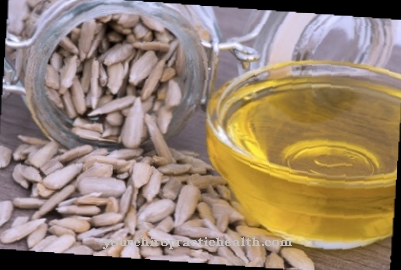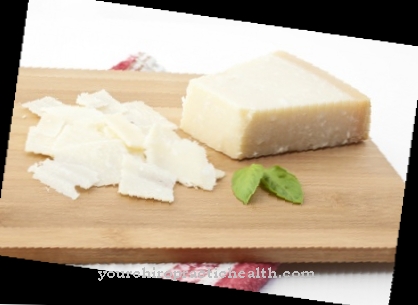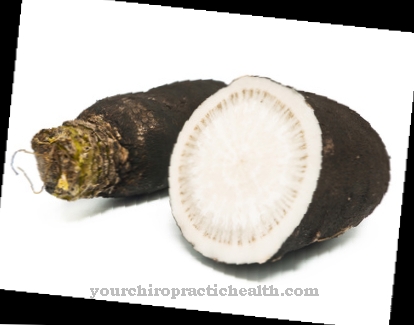Wasabi or Water radish is known as a hot green spice paste from Japanese cuisine. The trunk is processed into paste, which is why wasabi is no longer exclusively cultivated in Japan.
What you should know about wasabi

Wasabi is a cruciferous plant and is also known as Japanese or water horseradish. The wild plant can only be found in Japan, but wasabi can be cultivated in greenhouses around the world and is therefore also grown outside of Japan.
The root of the wasabi plant is mistakenly understood as the basis for the Japanese hot spice, but in fact the stem is finely grated. This can grow up to 60 cm high and can be harvested from May to June. In Germany mostly ready-made pastes, powders or wasabi-coated foods such as nuts are offered, the fresh wasabi strains are more likely to be found in specialized shops and are not infrequently imported from Japan.
Some nurseries also offer wasabi for self-cultivation, but it needs a shady and rather cool place during the summer and is only partially winter-proof.
Wasabi develops its maximum heat when the trunk is freshly grated and processed immediately. Wasabi loses its heat very quickly in the fresh air. In Japan, the wasabi trunk is traditionally rubbed on a piece of peeled shark skin, which has very fine teeth and grinds the wasabi exactly as desired. It is served in small portions with sushi and other rather mild-tasting dishes, to serve as a spicy dip or a change in taste to the mild main course.
Importance to health
The basis of the wasabi heat is based on mustard oils. More precisely, Wasabi supplies the two mustard oils sinigrin and glucocochlearin, the former mustard oil can also be found in conventional mustard or in horseradish.
Mustard oils are known to regulate and stabilize digestion, and they also inhibit the growth of many bacteria in the body and thus have anti-inflammatory effects. In addition to bacteria, the mustard oils in wasabi also have an inhibiting effect on viruses and fungal infections. Regular consumption of wasabi could lead to a general improvement in the performance of our immune system, as the number of immune cells is increased. However, wasabi in large quantities is also not good: especially if you already have stomach problems, the spiciness of wasabi can make them even more unpleasant and result in stomach problems and diarrhea.
However, when considering the importance of wasabi for health, the question of whether it is real wasabi or a paste or a powder always plays a role. Powders and pastes usually contain only a small amount of wasabi, but all the more additional substances that are easier to preserve. Most of the time, however, these are also harmful to health, especially preservatives and artificial colors.
Ingredients & nutritional values
| Nutritional information | Amount per 100 gram |
| Calories 109 | Fat content 0.6 g |
| cholesterol 0 mg | sodium 17 mg |
| potassium 568 mg | carbohydrates 24 g |
| Fiber 8 g | protein 4.8 g |
Pure wasabi without any other additives contains some vegetable proteins, vegetable carbohydrates and very little vegetable fat. Pure wasabi is considered cholesterol-free. The micronutrients it contains include sodium, potassium, iron, magnesium and vitamins A, C, D and B12, among others.
It can be different with powders or pastes that contain additional preservatives or that have received additional additives through processing. Here it is helpful to take a look at the list of ingredients, in particular you should pay attention to preserving salt. With the wasabi snacks popular in this country, the wasabi is of course only the side dish and the nutritional values come mainly from the snack. If you eat wasabi nuts in large quantities, you could consume a lot of salt and fat - and of course preservatives and colorants of the very likely fake wasabi powder.
Intolerances & allergies
Small amounts of mustard oils can have beneficial effects on health, but sometimes they are also the cause of intolerance. People with stomach problems or generally poor tolerance of spicy foods are very likely to have poor tolerability of wasabi. The mustard oils, at least in large quantities, can lead to stomach pain with diarrhea. This is a normal sensitivity reaction to spicy food.
Allergies, on the other hand, can exist against the mustard oils in the wasabi itself. You should also be very careful with wasabi pastes, they often consist only of green mustard powder and do not contain any wasabi at all. The tartrazine contained here can cause allergies. Real wasabi rarely causes allergies and is generally well tolerated, apart from a possible reaction to the spiciness.
Shopping & kitchen tips
There are basically two types of wasabi: real and fake. Real wasabi consists of water radish and, at best, contains no other additives. In this country, however, it is rather rare, which is also due to the fact that wasabi loses its sharpness so quickly after processing.
However, it is also this wasabi that contains valuable mustard oils and is generally well tolerated if there are no problems with mustard oils. The lion's share of wasabi sold in this country is a powder mixture made from mustard powder and green color, in which there is little or no real wasabi. Sometimes it also contains domestic horseradish. The Japanese refer to this as Seiyō Wasabi, the real variant is called Hon Wasabi. You should therefore pay attention to these designations on the packaging and the list of ingredients when buying.
Real wasabi on the trunk should be stored airtightly packed for a few days, it is rubbed a few minutes before consumption. Half an hour in the fresh air can be enough to prevent wasabi from tasting particularly hot. In fact, the artificial, fake seiyō wasabi is much more common than real wasabi, also in restaurants.
Preparation tips
Wasabi is used as a condiment and hot side dish in traditional Japanese cuisine. Since the real trunk was traditionally freshly rubbed on a piece of shark skin, it is known in Japan as a finely grated side dish that is served with sushi, for example. The creamy wasabi paste that is served in this country is hardly known in Japan, even if pastes and powders are now also sold there.
If you are lucky enough to get a wasabi strain, you grate it fresh to serve - and only as much as you want to offer. Otherwise it can only be kept in airtight packaging. The fake Seiyō Wasabi is sold as a paste for sushi, for example, as a coating for nuts, peas, other vegetables or in the form of wasabi chips. In the meantime, these products must contain a minimum amount of real wasabi, but this is still very low. The spiciness of such wasabi snacks mostly comes from horseradish and mustard.



























